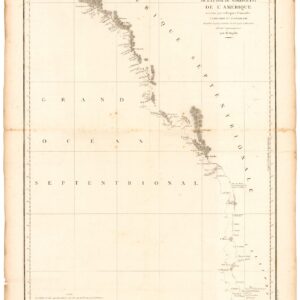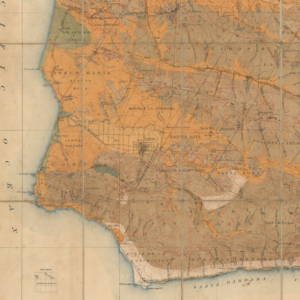An Elusive Mojave Desert Paradise.
Promotional Maps for California City, Antelope Valley, California.
Out of stock
Description
A fascinating group of promotional maps and materials related to California City, a partially completed planned city in the Mojave Desert, produced between the early 1960s and mid-1970s.
California City lies in the northern part of Antelope Valley in Kern County, California. Situated on the edge of the Mojave Desert, the area sat on historical transport routes for borax mines further east but otherwise remained undeveloped in the early 20th century. The Second World War brought airfields to the region, with nearby Edwards Air Force Base (formerly Muroc Field) becoming especially important. California City was planned from scratch in 1958 when developers bought 82,000 acres of land and began to market the homes and the city. California City was designed by architects Garrett Eckbo and the firm Smith and Williams (Whitney R. Smith and Wayne Richard Williams), all important figures in defining the California mid-century modern style in architecture and landscape design.
Eckbo was a pioneer in experimenting with flexible use of space and incorporation of open natural areas, from individual homes to entire cities. His influence can be seen in the city’s layout in the yellow ‘Street Guide to California City,’ consisting of neatly planned groupings of residential developments (‘nucleated towns’) around a central commercial and governmental center, a golf course, and a park. The map’s verso reproduces a 1961 promotional piece from the Los Angeles Examiner (with photographs of Eckbo, Williams, and Smith), while the other two sheets encourage viewers to buy in ‘Mendiburu Estates,’ a planned housing development that was never completed beyond laying out a street grid (the text in red about the lack of pre-existing water infrastructure suggests why).
With thousands of residents moving in, the city was incorporated in 1965, taking in a vast territory (it is the third largest city in California by land area). But California City never reached its projected population, and homeowners began complaining that the developers had misled them. The Great Western United Corp. had promised significant increases in the value of the land and homes. The company had also indicated that the city was more ‘complete’ than it actually was and had an abundant water supply, when in fact it did not.
The Federal Trade Commission launched an investigation in 1969, which then brought greater attention to California City when the FTC was scrutinized by Ralph Nader and ‘Nader’s Raiders.’ In 1977, the FTC awarded $4 million to investors in California City and two similar projects by the same firm in Colorado and New Mexico, its largest settlement at the time. Even today, empty and near-empty developments, including ‘Mendiburu Estates’ and the adjacent, partially completed ‘Mendiburu Estates South,’ are common in California City.
Despite these problems, the city has continued to grow steadily – though not according to its original plan – populated by workers at Andrews Air Force Base, a Marine Air Station at Mojave, and a state correctional facility within city limits. The city’s experience can be compared to other ‘desert paradises’ promoted throughout the American Southwest by developers in the postwar period.
Census
These promotional materials are quite rare in institutional collections. The large-format yellow-tinged street guide is held by the Library of Congress, the University of California Berkeley, and California State University Fresno, while a 1974 dated edition is held by the University of California Santa Barbara. Mendiburu Estates promotional materials are not recorded among the holdings of any institution.
Cartographer(s):
Condition Description
Three sheets (large map with promotion on verso, plus two separate one-sided sheets). Each has varying levels of toning and wear to the fold lines, including splits towards the edge. Associated documents included.
References



